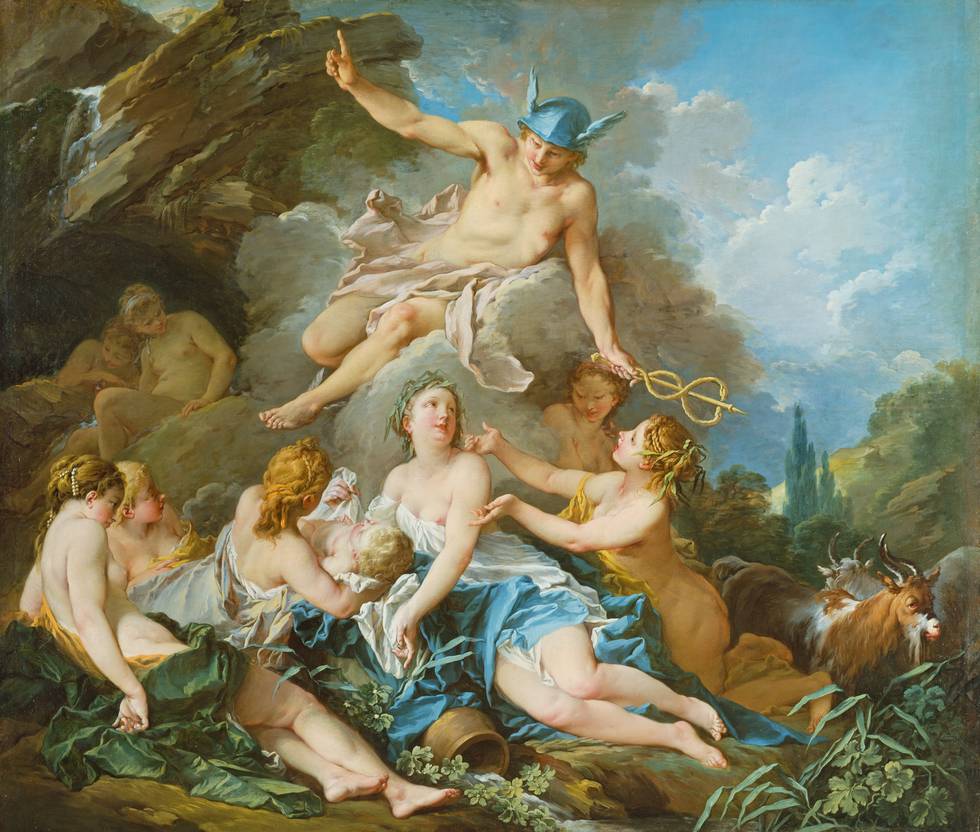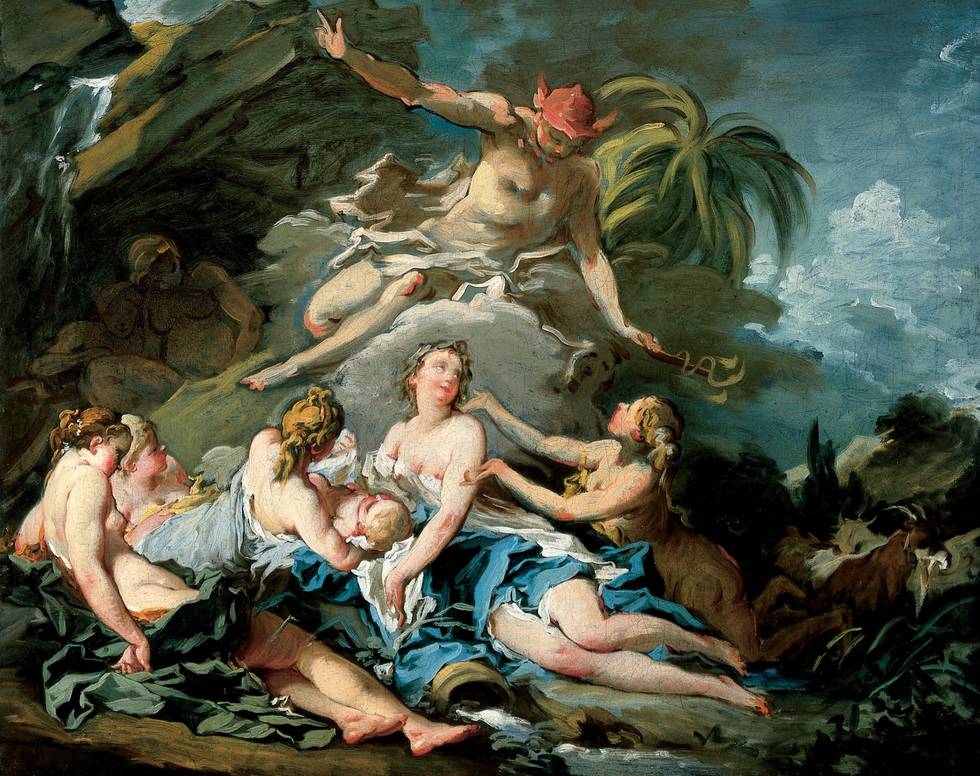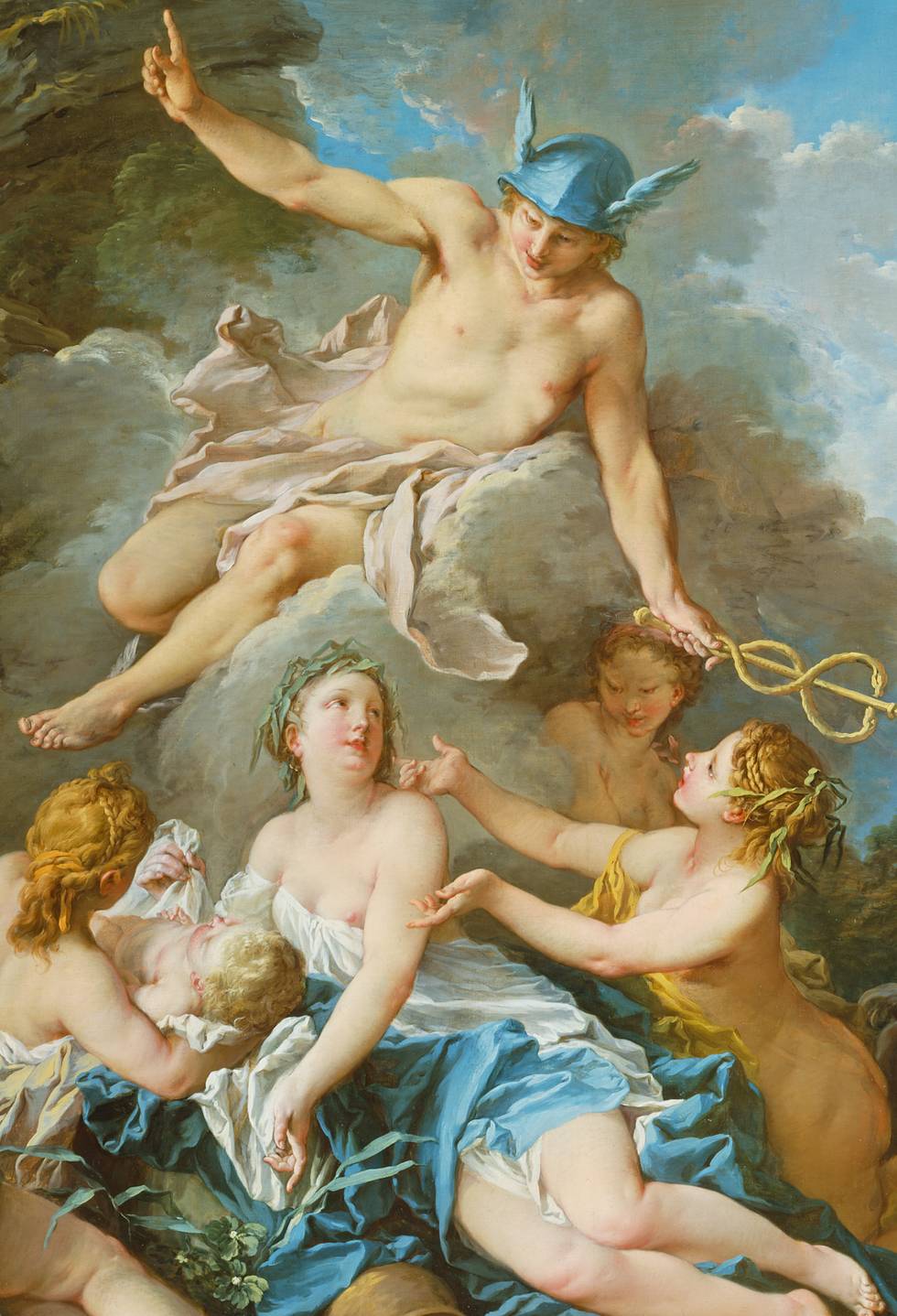Date: c. 1732-4
Materials: Oil on canvas
Measurements: 230 x 273 cm
Inv. No: P487
While pregnant with Bacchus, Semele, his mother, was convinced by the jealous Juno to demand that Jupiter visit her in his godly form rather than as a mortal. Unable to survive the god’s divine presence, Semele perished, but Mercury saved Bacchus and sewed him into Jupiter’s thigh.
Mercury Confiding the Infant Bacchus to the Nymphs, along with its companion piece The Abduction of Europa, was painted by François Boucher (1703–1770) without fee for the lawyer Derbais, and displayed in Derbais’s billiard room.
At the time, Boucher was eager to establish himself with influential patrons after his time in Italy. These canvases impressed contemporaries and helped solidify his reputation as one of Paris’s foremost history painters.

A series of preparatory sketches and drawings reveal the care Boucher took with this series. To refine composition and effects, he painted quick oil sketches to capture initial ideas.
The sketch for Mercury Confiding Bacchus to the Nymphs appears to predate The Abduction of Europa due to its fragmented brushwork, more straightforward use of color, and some anatomical inaccuracies, such as Mercury’s legs.
In comparing the sketch to the finished painting, we see how Boucher adjusted colors for harmony, replacing red on Mercury’s helmet, for example, and removing a distracting palm tree near Mercury’s head to draw attention to the traditional pyramidal composition.

Each figure was based on a live model and shows Boucher’s evolving skill with the female form, reflecting greater confidence than his earlier Watteau-inspired studies.
The nudes in Mercury Confiding Bacchus to the Nymphs and The Abduction of Europa embody the fashionable ideal of feminine beauty in the eighteenth century, described as about five feet tall, with wide hips, a defined waist, full arms, smooth skin, and firm, round thighs. Ideal feminine faces were round, with high foreheads, rounded cheeks, small mouths, and straight noses.
Though different from today’s aesthetic of slenderness, this style was considered slimmer and more refined than the fuller forms of the seventeenth century. Boucher’s nudes reflect this elegance, and any suggestion of sensuality is softened by the meticulous detail in their coiffures, adorned with ribbons, pearls, and garlands.

Although less often discussed, Boucher’s male figures share a similar elegance. His chalk drawing for Mercury reveals a long-limbed, slim, almost youthful figure that evokes classical depictions of Apollo, representing male beauty linked to peace, refinement, and leisure rather than action or labor.
The subject of Mercury Confiding Bacchus to the Nymphs also provides insight into how it was likely perceived by viewers. While it might seem unrelated to the other works for Derbais by depicting the outcome of an amorous affair rather than its beginning, the painting celebrates Bacchus, who would later gift humanity with wine.
Around the time of Boucher’s painting, Parisians were discovering the pleasures of champagne. The subjects of the other paintings for Derbais form a loose allegory of the senses: Venus and her sea-nymphs represent sight, the flowers in Europa convey smell.
Together, Mercury and Europa are a tribute to sensual pleasures, rendered with visual richness to evoke the douceur de vivre—the “sweetness of life”—so valued in 18th-century Parisian culture. In Derbais’s billiard room, standing before Boucher’s paintings, viewers might well have shared in Voltaire’s vision of an earthly paradise filled with life’s diverse pleasures.
Text adapted from Hedley, J., Francois Boucher: Seductive Visions, London, 2004.



